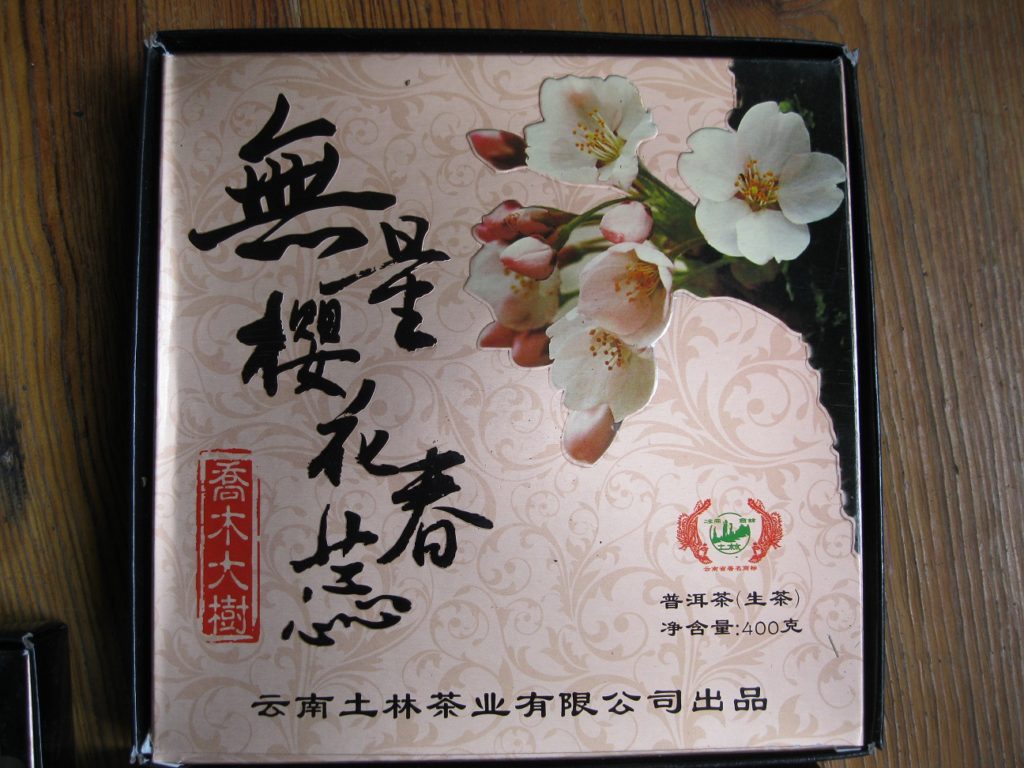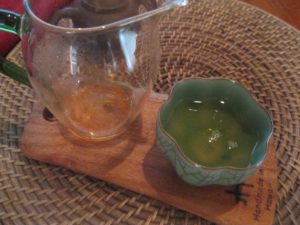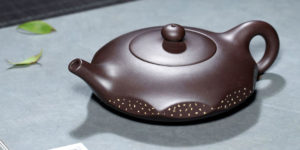Smoke, Sugar, and Stone: Puerh Vessels Cont.

Smoke, sugar, and stone, that’s the tastes I pick up drinking Cherry Blossom from my cracked-ice celedon cup. The yellow clay cup gives a considerably rounder effect. Welcome to puerh vessel comparison continued. In this foray, we’re taking a closer look at ’12 Cherry Blossom puerh cake with the following cast of characters:
My new clay pot 150cc– the fanciest of my acquisitions so far. I’m calling it UFO.
Next is this cup, probably my fav, in a shot taken barely over a year ago.

Finally there’s a yellow clay cup, for which I have neither picture nor recollection of how it entered my possession.
The religious reader of these most-episodic posts may be scratching his head, as only in my very last post I had established that productions younger than 10 years old are best in a gaiwan. I’ve had Cherry Blossom in both even quite recently. It is a unique raw that I can imagine enjoying any which way.
The UFO pot has a fast pour rate. This is ideal for taking advantage of the clay chemistry while preventing over brewing. In the initial infusions, the glazed cup imparts a bit more ashy bite at the end. By the fifth infusion, the tea must soak for at least 10s and the difference between the two becomes less discernible. It seems that the celedon cup begins to be just as round but with greater evidence of tobacco and smoke, though I could be making that up. What I don’t feel I’m making us is how thicker and rounder the experience is with the clay cup. At a lower temp, vanilla notes are more apparent from it.
From the seventh infusion, brewing time needed to be increased to about 30 s. At this stage of its development, the Cherry Blossom name seems wholly fitting, as the cherry notes really gain steam especially in the aftertaste. With longer brewing times at cool temps, some bitterness comes through but not bottoming out bitterness.
Somehow, I feel that the experience with the glazed cup is better because the notes come through purer than with clay. The tea itself is impressive on many levels from complexity of taste to durability to its salivation production.
No Fields Found.
